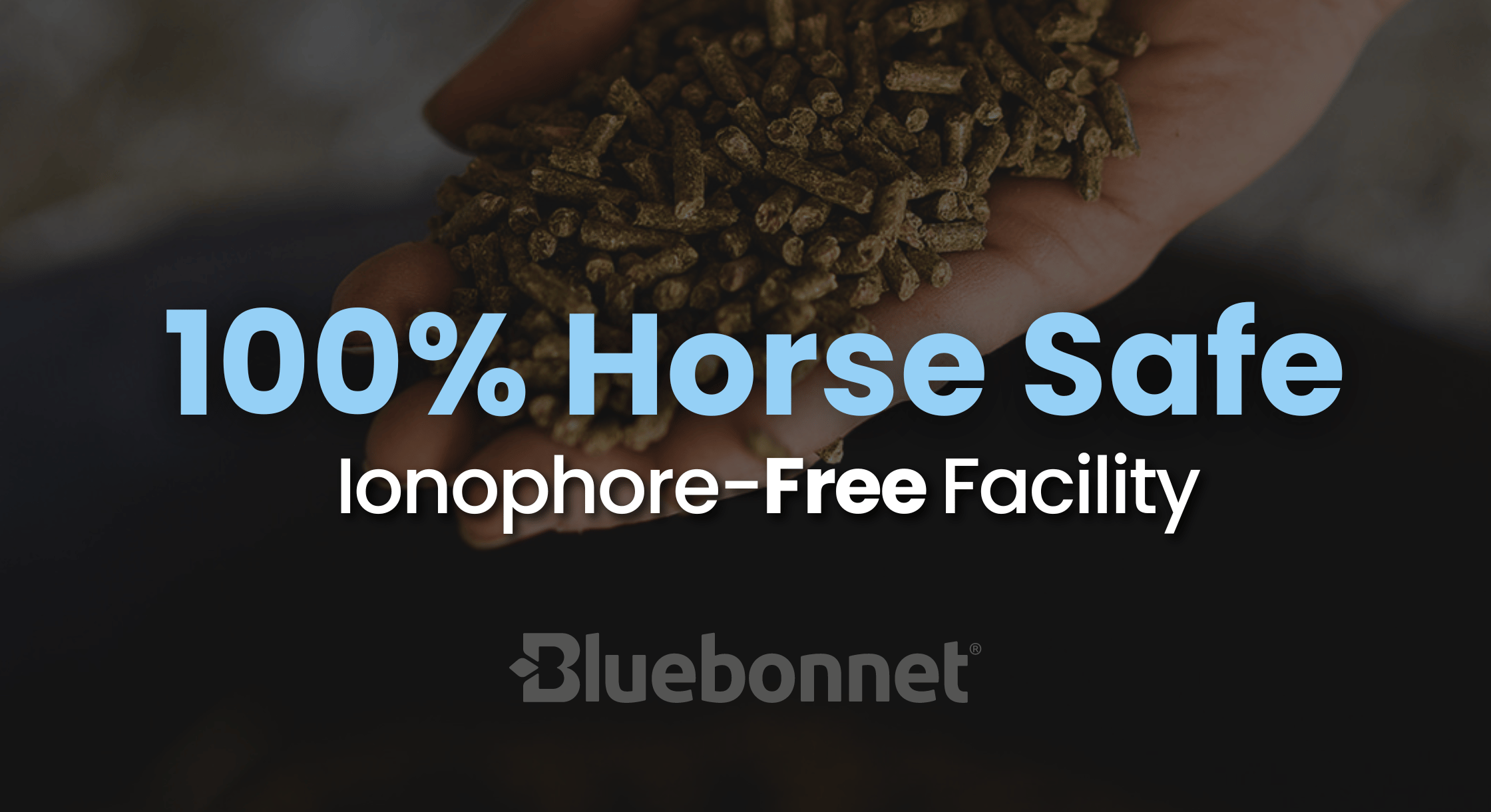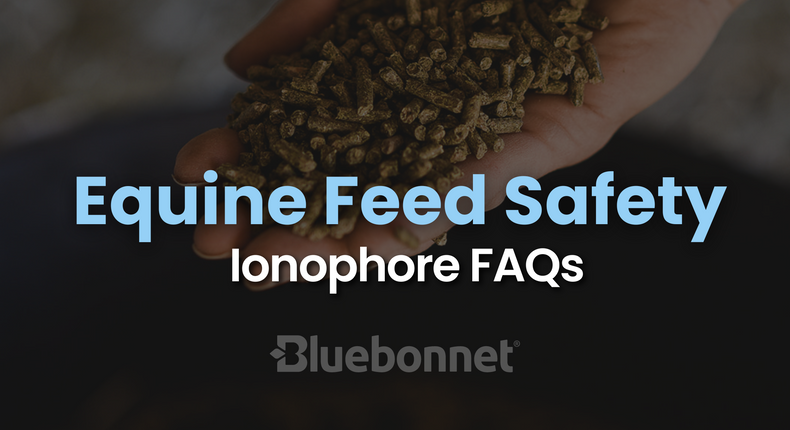
How safe is your horse’s feed?
If the feed is milled at a plant that also manufactures livestock feed containing ionophores, there’s a risk of cross-contamination which could be fatal to your horse. Unfortunately, deaths like this occur each year because ionophores have been mistakenly mixed into horse feeds at a manufacturing facility or horses have ingested feed that was intended for another specie.
Ionophores are commonly added to feed for cattle to improve weight gain and are also used in poultry and goat rations as a coccidiostat to control protozoa infections. Ionophores function by increasing cell membrane permeability, allowing better transfer of molecules into and out of cells within the body. Several ionophores are approved for use in the United States with the most common being monensin, salinomycin, lasalocid, laidlomycin and narasin.
Horses are much more sensitive to ionophore poisoning than other species.
The safety zone for monensin in horses is under 2-3 mg, whereas cattle can tolerate 20-34 mg, and poultry 90-200 mg. When higher-than-acceptable concentrations of ionophore are found in equine feed, a horse could be dead in less than 24 hours after ingestion.
Ionophore toxicity inhibits sodium and potassium ion transport across cell membranes, which can kill cells—especially muscle cells—leading eventually to total system failure and death. Signs of ionophore poisoning in horses includes poor appetite, diarrhea, muscle weakness, depression, wobbling, colic, excessive urination, sweating, lying down and sudden death.
Ionophore intoxication damages the kidneys as well as the skeletal and heart muscles. There is no specific treatment for a poisoned horse and those that survive usually have permanent heart damage.
Prevention is the best method for avoiding ionophore toxicity in horses. Choose to buy your feed from manufacturers who have specifically declared their facility as ionophore-free. There are very few facilities that choose to be ionophore-free, so do your homework to find out specifically which mill your horse feed is coming from. The name and location of the mill where the feed is manufactured will printed at the bottom of the feed tag or on the back of the feed bag. Horse owners are encouraged to call the mill and ask if they manufacture any feeds for any species that contain ionophores.
If you must purchase ionophore-containing feed for other species, do not allow your horse access to that feed. It is essential to store that feed in a different location away from the horse feed in order to prevent a feeding error. Also, ensure that the area is secured so that a curious horse cannot open the door and get into the feed himself.
Don’t confuse an “ionophore-free” feed mill with an “ionophore-safe” feed mill.
An “ionophore-free” facility chooses not to use ionophores in any feeds for any species, making it “free” of all ionophores. However, a mill that chooses to produce some of its feed with ionophores will use a series of flushes to clean the system and make it “safe” to manufacture horse feeds. But no matter how efficient the flushing procedure is, there is always a risk of cross-contamination. There is also the opportunity for human error. If ionophores are on the premises, there is always the chance that an employee could accidentally add ionophores to a feed intended for horses.
*Bluebonnet is an ionophore-FREE mill.

